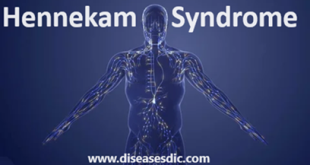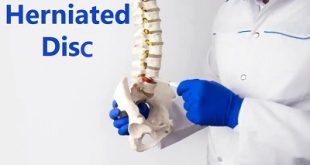Definition
Henoch-Schönlein purpura (HSP) is a rare inflammatory disease of the small blood vessels (capillaries) and is usually a self-limited disease. It is the most common form of childhood vascular inflammation (vasculitis) and results in inflammatory changes in the small blood vessels. The symptoms of HSP usually begin suddenly and may include headache, fever, loss of appetite, cramping, abdominal pain, painful menstruation, hives, bloody diarrhea, and joint pain. Red or purple spots typically appear on the skin (petechiae). Inflammatory changes associated with HSP can also develop in the joints, kidneys, digestive system, and, in rare cases, the brain and spinal cord (central nervous system).
In one form of the disorder, termed Schönlein’s purpura, the skin and joints are affected but the gastrointestinal tract is not. In another form, known as Henoch’s purpura, affected individuals have purplish spots on the skin and acute abdominal problems, such as glomerulonephritis (a type of kidney disorder). People with Henoch’s purpura are not affected by joint disease.
The exact cause of HSP is not fully understood, although research demonstrates that it is related to an abnormal response by the immune system or, in some rare cases, an extreme allergic reaction to certain offending substances (e.g., foods or drugs).
History
1802 – First described by William Heberden the elder, a London based physician who described a case of a 4-year-old boy with all four hallmarks of HSP: gastrointestinal involvement, kidney involvement, arthritis, and purpura. Initially known as Heberden-Willan disease [Ch 78 De purpureis maculis; or]
1837 –Johann Lukas Schönlein described an association between the presence of purpura and arthritis
1874 and 1899 – Eduard Heinrich Henoch, a student of Schönlein’s, added gastrointestinal and renal involvement respectively, to the description
1920 – Eduard Glanzmann reported on the allergic components of HSP as ‘Anaphylaktoide Purpura‘
1990 – American College of Rheumatology published diagnostic criteria for HSP including palpable purpura; age 20yrs or younger at onset; bowel angina; and wall granulocytes on biopsy. A patient requires at least 2 of these criteria for a diagnosis of HSP
2012 – The International Chapel Hill Consensus Conference Nomenclature of Vasculitides proposed replacing the term Henoch-Schonlein Purpura with the term IgA Vasculitis to better reflect the underlying pathophysiology
Epidemiology
Henoch-Schönlein purpura is a rare disorder that typically affects children; however, the disorder can also be seen in adults and adolescents. The majority of children present before the age of 10. It is often more severe and more likely to cause long-term renal disease in adults. It is the most common vasculitis among children, affecting 10 to 20 children per 100,000 per year. Henoch-Schönlein purpura occurs slightly more often in White males.
Pathophysiology
In patients with Henoch-Schönlein purpura, immunoglobulin A (IgA) immune complexes are deposited in small vessels, which causes petechiae and palpable purpura. When immune complexes occur in small vessels of the intestinal wall, gastrointestinal hemorrhage may develop. If the immune complexes affect the renal mesangium, it may produce mild proliferative to severe crescentic glomerulonephritis.
Exposure to an antigen from an infection, medication, or other environmental factor may trigger antibody and immune complex formation. Group A streptococcus has been found in cultures of more than 30 percent of children with Henoch-Schönlein nephritis, and serum antistreptolysin-O titers are more likely to be positive in patients with Henoch-Schönlein nephritis. Other postulated viral and bacterial triggers of Henoch-Schönlein purpura include parvovirus B19, Bartonella henselae, Helicobacter pylori, Haemophilus parainfluenza, Coxsackie virus, adenovirus, hepatitis A and B viruses, mycoplasma, Epstein-Barr virus, varicella, campylobacter, and methicillin-resistant Staphylococcus aureus.
Causes of Henoch-Schonlein Purpura
The exact cause of HSP has not been identified. Several factors can trigger the immune response that leads to HSP:
- Exposure to cold weather
- Foods
- Infections such as:
- Chicken pox
- Measles
- Hepatitis
- HIV
- Insect bites
- Certain medications
- Trauma
Symptoms
Each child with Henoch-Schönlein purpura may experience symptoms differently. Common symptoms include:
- Purpura: bleeding into the skin, mucous membranes, internal organs, and other tissues
- Arthralgia: pain in the joints
- Inflammation of the joints
- Abdominal pain
- Gastrointestinal bleeding: bleeding in the gastrointestinal tract, which includes the mouth, esophagus, stomach, and intestines
- Nephritis: inflammation of the kidneys
- Subcutaneous edema: swelling just below the skin
- Encephalopathy: dysfunction of the brain
- Orchitis: inflammation of the testicle(s)
Renal (kidney) involvement is common, occurring in 30 to 70 percent of children with HSP.
- Kidney disease is usually noted after the onset of other symptoms.
- Worsening of the kidney symptoms and biopsy-confirmed worsening of the kidney lesions may be observed in patients with repeated attacks of rash or hematuria (blood in the urine).
Risk factors
Factors that increase the risk of developing Henoch-Schonlein purpura include:
- VIral or bacterial infections such as measles, chickenpox, or strep throat
- Certain vaccines such as the flu vaccine
- Certain medicines such as antibiotics or aspirin
- Allergies to insect bites, chocolate, milk, or wheat
- Living in cold weather
- A family history of HSP
Complications of Henoch-Schonlein purpura
Some of the possible (but rare) complications of HSP include:
- Bowel folding like a concertina (intussusception)
- Perforation of the bowel wall
- Gastric haemorrhage and vomiting of blood
- Pancreatitis
- Testicular pain and swelling (may mimic a testicular torsion emergency)
- Pulmonary haemorrhage.
Henoch-Schonlein Purpura Diagnosis
Henoch-Schönlein purpura (HSP) is usually suspected because of the typical symptoms. However, a number of investigations may be suggested to help doctors confirm the diagnosis and to see which body parts may be affected by the inflammation. Investigations may include the following:
Blood tests
- To look at how the kidneys are working.
- To look for any signs of recent Group A streptococcal infection.
- To confirm that platelet levels are not low. (Platelets are a type of blood cell. In some conditions, a rash similar to that in HSP develops because platelet levels have become too low for some reason.)
- To look at immunoglobulin A levels which are usually high in HSP.
Skin biopsy
If the diagnosis is uncertain, a biopsy of the skin may be suggested. A very small sample of skin affected by the rash is taken and examined underneath the microscope. There is a typical appearance under the microscope in HSP.
Urine dipstick test
This is a special testing strip can be dipped into a sample of urine to look for signs of any kidney involvement. For example, signs of traces of protein and/or blood in the urine which may not be seen by the naked eye.
A blood pressure check
lBlood pressure can be raised if HSP involves the kidneys.
Kidney biopsy
If signs of more severe kidney problems develop (for example, blood tests to look at how the kidneys are working show that they are struggling), a procedure in which a sample of the kidneys is taken (a biopsy) may be suggested. This can give more information about the kidney inflammation and how severe it may be.
Stool test
To look for any signs of blood in the stools (faeces). If there is bleeding within the gut (gastrointestinal bleeding), this can lead to blood in the stools, which sometimes cannot be seen by the naked eye. A test on a small sample of stool can pick up microscopic traces of blood.
Other tests
If other complications develop, certain other tests may be suggested. For example, if pain in the scrotum develops, an ultrasound scan of the scrotum may be suggested.
Treatment for Henoch-Schonlein Purpura
While HSP is generally a mild illness that resolves spontaneously, it can cause serious problems in the kidneys and bowels. The rash can be very prominent, especially on the lower extremities.
The treatment of HSP is directed toward the most significant area of involvement.
- Joint pain can be relieved by anti-inflammatory medications such as aspirin or ibuprofen (Motrin).
- Some patients can require cortisone medications, such as prednisone or prednisolone, especially those with significant abdominal pain or kidney disease.
- With more severe kidney disease, involvement called glomerulonephritis or nephritis, cyclophosphamide (Cytoxan), azathioprine (Imuran), or mycophenolate mofetil (Cellcept) have been used to suppress the immune system.
- Infection, if present, can require antibiotics.
Surgery
If a section of the bowel has folded in on itself or ruptured, surgery may be needed.
How can I manage my symptoms?
- Apply ice on your joints for 15 to 20 minutes every hour or as directed. Use an ice pack, or put crushed ice in a plastic bag. Cover it with a towel. Ice helps prevent tissue damage and decreases swelling and pain.
- Apply heat on your joints for 20 to 30 minutes every 2 hours for as many days as directed. Heat helps decrease pain.
- Elevate your joint above the level of your heart as often as you can. This will help decrease swelling and pain. Prop your joint on pillows or blankets to keep it elevated comfortably.
- Drink plenty of liquids as directed. Liquids help prevent dehydration from vomiting or diarrhea. Ask how much liquid to drink each day and which liquids are best for you.
- Rest as directed to help your body heal. Ask your healthcare provider when you can return to your normal activities.
Prevention
HSP can be prevented only to the extent that one minimizes exposure to viruses and certain drugs that could cause the abnormal immune response. As it is impossible to know who will get HSP, it is not possible to actually prevent it.
 Diseases Treatments Dictionary This is complete solution to read all diseases treatments Which covers Prevention, Causes, Symptoms, Medical Terms, Drugs, Prescription, Natural Remedies with cures and Treatments. Most of the common diseases were listed in names, split with categories.
Diseases Treatments Dictionary This is complete solution to read all diseases treatments Which covers Prevention, Causes, Symptoms, Medical Terms, Drugs, Prescription, Natural Remedies with cures and Treatments. Most of the common diseases were listed in names, split with categories.







